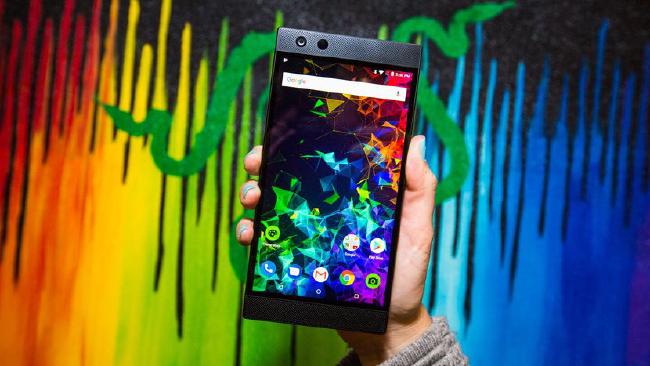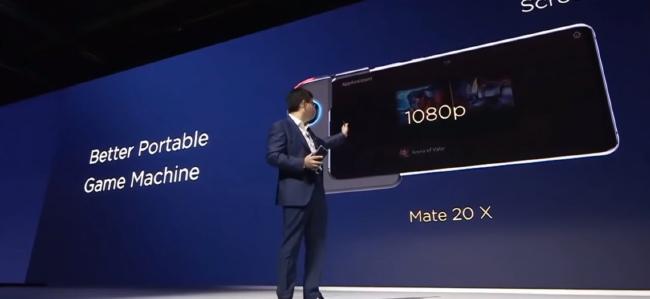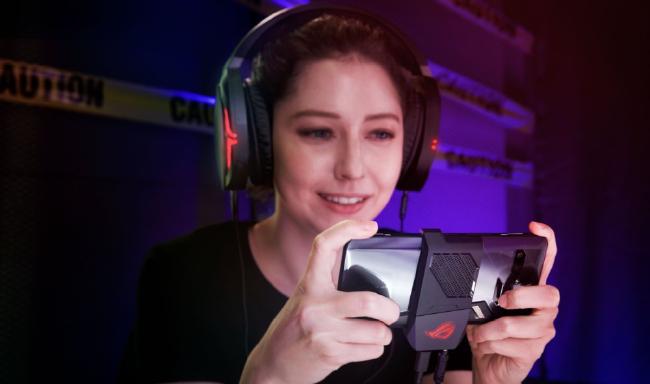Categories
Mobile gaming overtakes PC and console for the first time
8 minute read
A new report from reputable games and esports analytics firm Newzoo reveals that mobile gaming revenue will have taken over 50% of the global games market in 2018. This means that, for the first time, mobile gaming revenue has beaten both PC and console gaming combined. I want to share some interesting stats on mobile gaming, take a look at why there’s been such growth in the mobile gaming industry, and what excellent new smartphones are being released because of it.
The mobile gaming industry is seeing constant growth

It turns out that the mobile gaming industry has been growing at lighting pace for a long time. In fact, Newzoo reports that mobile gaming has seen double digit growth for 10 years. Since the first iPhone launch, mobile gaming has kept up with this trend. This year we have seen 25.5% year on year growth and mobile gaming will bring in $70.3 billion in revenue.
In comparison, PC games saw a revenue of $32.9 billion, and console games saw a revenue of $34.9 billion this year. The year on year growth was 1.6% and 4.1% for PC and consoles respectively.
What’s most fascinating is that mobile gaming started off in the beginning as a very small portion of the global games market revenue. In 2012, mobile gaming took just 18% of the total revenue, leaving PC and console taking up the remaining 82%. In just four years, in 2016, mobile gaming became the leading platform, and now in 2018 it will take 51% of the market.

Newzoo believes that these trends will continue with mobile gaming gaining double digit growth for the next 10 years. By 2021, smartphone and tablet games will bring in a staggering $106.4 billion in revenue. Consoles and PC will share 41% of the market and the total revenue across all platforms is predicted to be $180.1 billion. To put this into perspective, that’s more than three times the 2020 predicted box office revenue ($49.3b).
How is the mobile gaming industry so successful?

Why is mobile gaming so popular? How is mobile gaming bringing in such big numbers when the majority of mobile games are completely free to download?
Well, it comes down to a number of factors. Firstly, we have to take a look at the overall growth and device penetration for mobile, consoles, and PCs. Device penetration is a stat used to determine how much of the population owns a certain device. This will help to showcase why mobile gaming is growing so quickly.
In 2014, for example, statista reported that desktop PC penetration was just 17 percent. One year before that, smartphone penetration hit 21.6 in 2014. In many countries, it has become far more affordable and suitable to own a smartphone than it is to own a cellphone and then a PC and monitor, or a console and TV.
So, it’s clear that more people own smartphones than people own desktops or consoles across the globe. This plays a big factor in the revenue the mobile game industry can make simply because there are more people who own a smartphone.
Secondly, the way mobile games make money is far different to the PC and console market. Whilst there are microtransactions in console/PC games, it’s more common for gamers to purchase a game and expansion for £50-£100 and not spend much more per game. Players get the full game experience without any restrictions and they can pay for optional extras like cosmetic items or future planned expansions.
On the flip side, many mobile games are often free, but they are created in a way that restricts gameplay unless you pay. I talked a lot about how mobile game companies will use tactics to encourage you to spend money in my Candy Crush Saga review. Some of the tactics that are used to bait mobile gamers would receive harsh criticism and mass online protests if they were used in desktop or console games. The overall mission for the developers is to get the average player to spend more over their lifetime due to small impulse purchases.
But, it’s not all bad news for the average mobile gamer. In recent years, the quality of mobile gaming has improved, partly due to an increase in interest in full 3D games that mimic those available on the PC and consoles.
For example, both Fortnite and PUBG were massive hits in 2017 and 2018, but it was the mobile versions of these games that brought the success to new levels. With both games being playable on mobile, millions of gamers were given an opportunity to play a 3D game they would otherwise not be able to, due to the lack of a console or gaming PC. Instead of creating a typical mobile monetization strategy for these games, the developers shared strategies from the original versions.
In both Fortnite and PUBG mobile, players can pay for cosmetics or special passes that let players attempt unique challenges for more cosmetic rewards. The full content of the game and all of its functionality in both cases is still completely free and unrestricted.
Thankfully, the approach that both Fortnite and PUBG Mobile used has been a huge success. This success has shown to the world that mobile gaming can still be incredibly profitable even without sly monetization tactics.
As a result, we’re seeing even more fully fledged games being developed by major gaming companies. For example, Bethesda, responsible for Elder Scrolls IV: Skyrim, is creating their own Elder Scrolls mobile game. Blizzard, responsible for Hearthstone, Diablo, World of Warcraft, and Overwatch, is also now working on a mobile Diablo game. I hope that this trend continues as more developers step in to create high quality mobile games with fair monetization techniques.
Mobile gaming growth means more gaming phones
Thanks to the huge growth in mobile gaming, we’re now seeing more manufacturers jump on the mobile gaming bandwagon too. Manufacturers are starting to develop and market smartphones specifically aimed at an audience that enjoys playing 3D mobile games like Fortnite and PUBG.
These phones are seeing a lot of success in some Asian countries where mobile gaming has long been the go-to option for many individuals. Thankfully, some of these phones are also available in the west. Here is a look at some of the best gaming phones available.
Razer Phone 2

The second generation Razer Phone may look identical to its predecessor, but it brings some adjustments and improvements over the original, making up for where the first one lacked. Thankfully, all of the great gaming-specific features are back too. The Razer Phone 2 is the perfect device for somebody looking for the ultimate multimedia and gaming experience.
This is thanks to the giant stereo speakers on the front, and the beautiful and incredibly bright and colorful 1440x2560 5.72" display. The display supports a 120Hz refresh rate, which is an absolute delight to experience for all tasks, not just gaming. With 120Hz, the screen refreshes twice as much as a normal 60Hz smartphone display does. In reality, this makes the display feel twice as fluid when you perform animations, play games, or watch movies. You also get a Snapdragon 845 processor and 8GB of RAM.
The camera on the Razer Phone 2 is a much needed improvement over the original. Although it can’t compete with the likes of Google, Apple, or Huawei, it’s still reasonable, thanks to the dual lens setup and 12 megapixel sensor.
Huawei Mate 20 X

For those that want the absolute biggest and best of everything Android has to offer, the Huawei Mate 20 X may interest you. The Mate 20 X has a huge 7.2 inch 1080 x 2224 display, the same world’s best 40 megapixel triple lens camera found on the Mate 20 Pro, 6GB of RAM, and a 5,000mAh battery.
Whilst the Mate 20 X may not have as many flashy features as other gaming phones do, Huawei are just as serious about this being a gaming phone as any other manufacturer. Huawei even teamed up with accessory manufacturer BETOP to create a gaming controller mount for the Mate 20 X.
ASUS ROG Phone

If you want a good gaming phone but you are sick of the on-screen touch controls, you should consider the ASUS ROG Phone. This device can be paired up with a variety of ASUS owned first party accessories. You can get a dock that adds a second screen and a number of different controllers. There are even docks that allow you to add keyboard, mouse, and headset functionality all whilst connecting the phone up to a monitor.
The device itself comes with some great specs, too. You’ll find a Snapdragon 845, 8GB of RAM, and a 4,000mAh battery on the inside. The display is 6 inches and has a resolution of 1080x2160. The camera on the ASUS ROG Phone isn’t anything to write home about, but it’s nice to see it’s there. You get a 12 megapixel dual lens primary camera and an 8 megapixel selfie camera.
Summary
Thanks for reading this article. I hope that you found it interesting. What are your thoughts on the booming mobile industry? Do you think one day mobile gaming will take over the traditional game console or PC in the average UK home?





